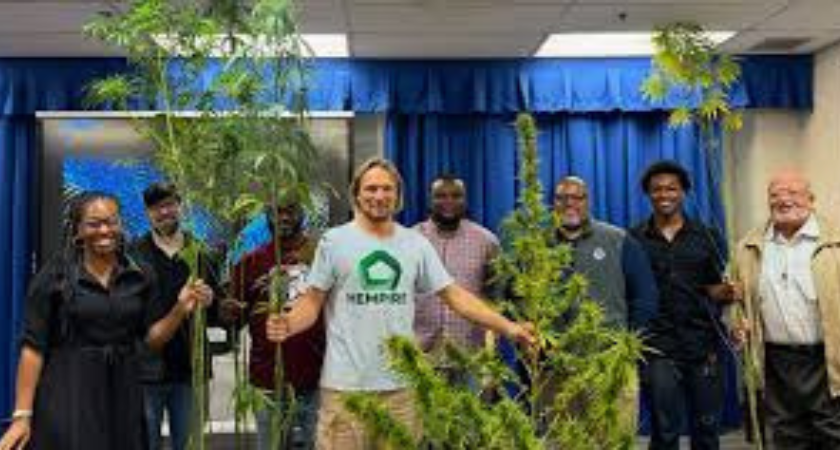
NORMAL, Ala. — Alabama A&M University is breaking new ground in sustainable construction by developing the first hemp-based building in the state — and potentially the first at a Historically Black College or University. The innovative structure will serve as a lounge and operations center for electric vehicle bus drivers.

The university recently hosted Sergiy Kovalenkov, a world-renowned hemp construction expert, for a two-day workshop that brought together architects, contractors, researchers, students, and community partners to explore hemp-based building materials. The workshop was organized by the university’s Department of Transportation in collaboration with Hempire UA, a company Kovalenkov co-founded in 2015.
Hempire has gained international recognition for its “Hempire Mix”, a carbon-negative hempcrete insulation made from industrial hemp, water, and a natural lime-based binder. Known for its energy efficiency, durability, and environmental benefits, the material has been used in projects across Europe, Asia, and North America.
“At Alabama A&M, this building will help us reach a 100% Zero Emissions Transit System while advancing our Green Initiative and reducing our carbon footprint,” said Marshall Chimwedzi, Director of the Bulldog Transit System. “Design plans are underway, and we plan to begin construction in January, with completion expected in December 2026.”
Lei Hollingsworth-Jackson, BTS Operations Supervisor, added, “This new lounge is a big win for our team. It will give our 20 drivers a larger space to relax, prepare, and coordinate before and after their routes.”

Kovalenkov, a civil engineer by training, highlighted the university’s commitment to innovation. “This project places Alabama A&M at the forefront of sustainable building practices. Universities play a crucial role in advancing hemp construction by combining research, data, and practical application,” he said.
Hempcrete, also known as hemp-lime, naturally regulates humidity, improves indoor air quality, and is resistant to fire, pests, and mold. “It replaces conventional insulation and drywall with a single, healthier material,” Kovalenkov noted. “For bus drivers working with electric vehicles, this lounge will also provide protection from electromagnetic fields, creating a healthier environment for rest and recovery.”
The project also supports Alabama’s agricultural sector. Joel Wasser, architect with Nola VanPeursem Architects, said, “This lounge will serve a practical need while prototyping a sustainable construction method. It aligns with Alabama A&M’s agricultural mission and could incentivize local farmers to grow hemp. Building quickly with locally sourced materials can also provide an economic boost amid a housing shortage.”
Construction will involve collaboration with local contractors, including Management Enterprise Development & Services and AAMU alumnus Jeremy Jowers, a superintendent with Garber Construction. Their participation underscores the project’s potential to influence local building practices and promote sustainable construction across the region.
Kovalenkov praised Alabama A&M for its visionary approach. “The building planned for this campus will be the first of its kind in Alabama,” he said. “It sets an example for universities, architects, and city leaders nationwide, showing that sustainability and innovation can go hand in hand.”
Originally reported by Alabama A&M University in 256 Today.